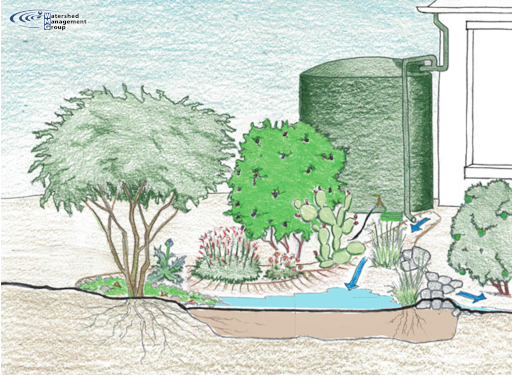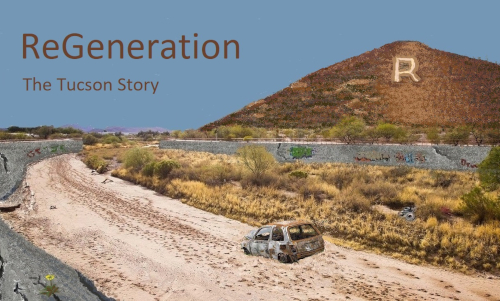Learn More About Regenerating Tucson
I don’t wanna give away any spoilers on how the resourceful teens in our story save Tucson from a dystopian future. But there are things we can do to prevent it from getting that bad in the first place - practical actions we can take right now to make sure that our children and their children have what they need to thrive in the future.
Of course, one of the biggest issues of living in our desert town is lack of water. We are in the midst of a 20 year drought. Currently, Tucson relies mostly on Colorado River water. That water is pumped 326 miles uphill to reach us. Unfortunately, that water has been depleted due to drought and climate change. On top of that, we share it with seven other thirsty states and Mexico. And some of those states have first dibs!
How do we make sure we have enough water in the future? That’s a complicated question. Obviously, we need to conserve water anyway we can. But there is an exciting solution right under our roof tops. According to Brad Lancaster, there is enough water for every Tucsonan’s needs if everyone did rainwater harvesting! Gutters can direct stormwater from rooftops (and other surfaces) to cisterns (water barrels) and catchment basins to irrigate desert landscaping, food gardens, and low-water fruit trees.

You can learn all about it at one of the free rainwater harvesting rebate classes offered by:
These classes also qualify you for up to a $2000 rebate on cisterns or $500 on earthworks (having a certified professional install a basin). The city also offers a Limited Income Grant and Loan program (where you can get a cistern, a native tree, and catchment basin practically for free).
Wanna to save more water? You can also get rebates on high-efficiency toilets and on gray water systems that direct washing machine water to irrigate your low-water fruit trees.
Trees! I love trees! Trees can really cool down your home and neighborhood. And they also sequester carbon. The Mayor has a Tucson Million Trees initiative to help shade Tucson and fight climate change.
There are several options for affordable trees, including:
But since it is the desert, you need to be mindful of the water you use. Native desert trees like mesquite and palo verde don’t take a lot of water once they are established. Plant them by catchment basins. These basins, filled with wood chip mulch and native grass create a sponge to hold the water longer!
One of the hottest trends in climate solutions is regenerative agriculture (and gardening). Why not replace your water-wasting lawn with a food garden? Community Food Bank of Southern Arizona offers workshops on low-water, desert gardening.
Regenerative gardening is one of the best ways to sequester carbon and it doesn’t require pesticides. Composting also keeps food waste out of the methane-leaking landfills!
As it continues to get hotter in Tucson, we will need clean energy to run our air conditioners to stay cool. Solar power with battery storage is a reliable option.
One organization in Tucson that is among the leaders in solar installation is Technicians for Sustainability.
There are lots of ways to make your home more energy efficient:
- Installing energy efficient windows
- Putting in better insulation
- Replacing your appliances with energy-efficient models when it's time for new ones
- Or better yet, replacing them with electric appliances that can be powered by solar
- Trading in your gas-guzzler for an electric vehicle that can be powered by solar
- Or riding a bicycle or taking mass transit
- Even the placement of your trees can help cool your house!
What kind of climate champion are you? Find out and start taking action!
Team ReGeneration thanks you! (Not to mention the other teens in your life!)
